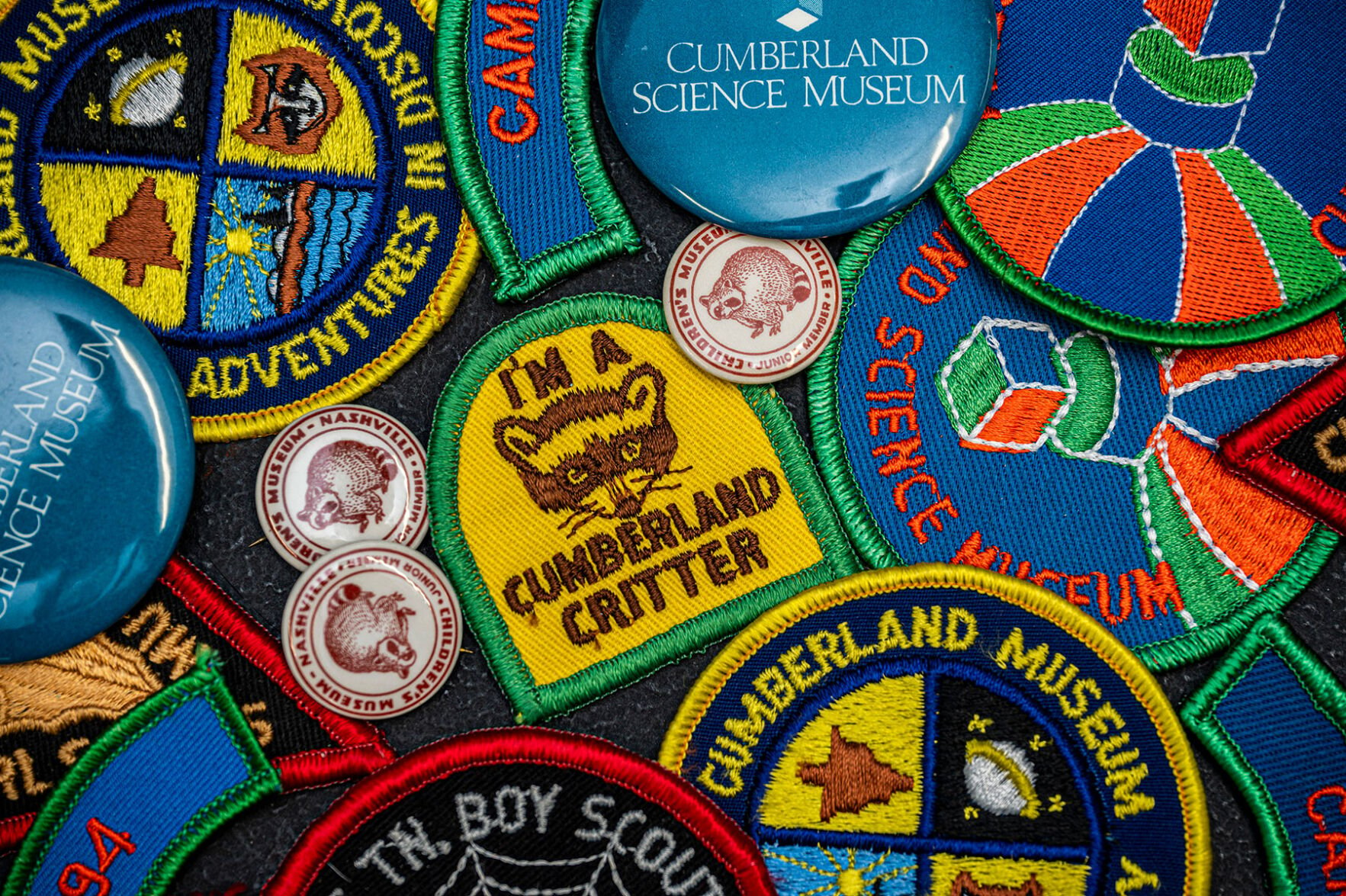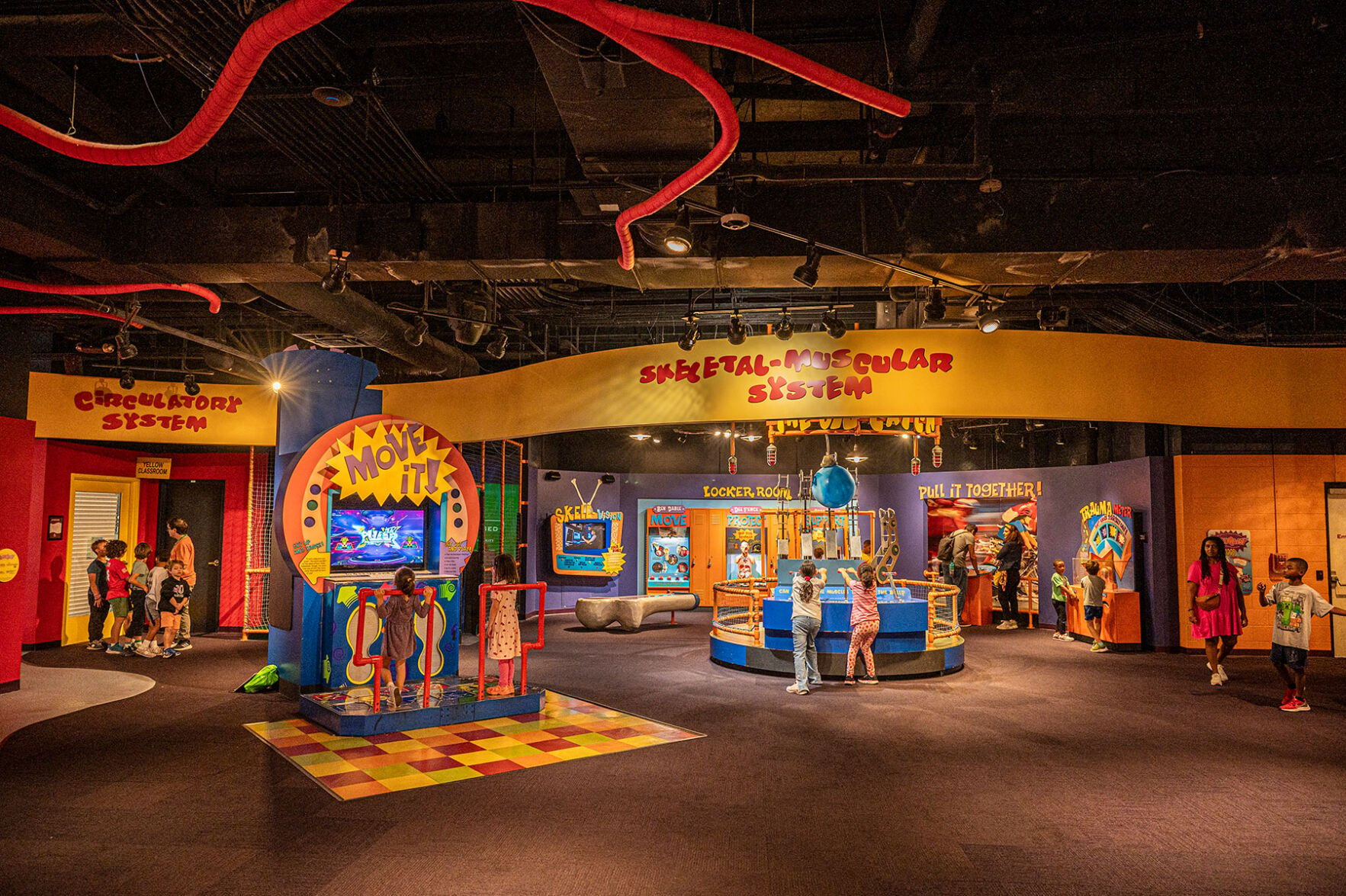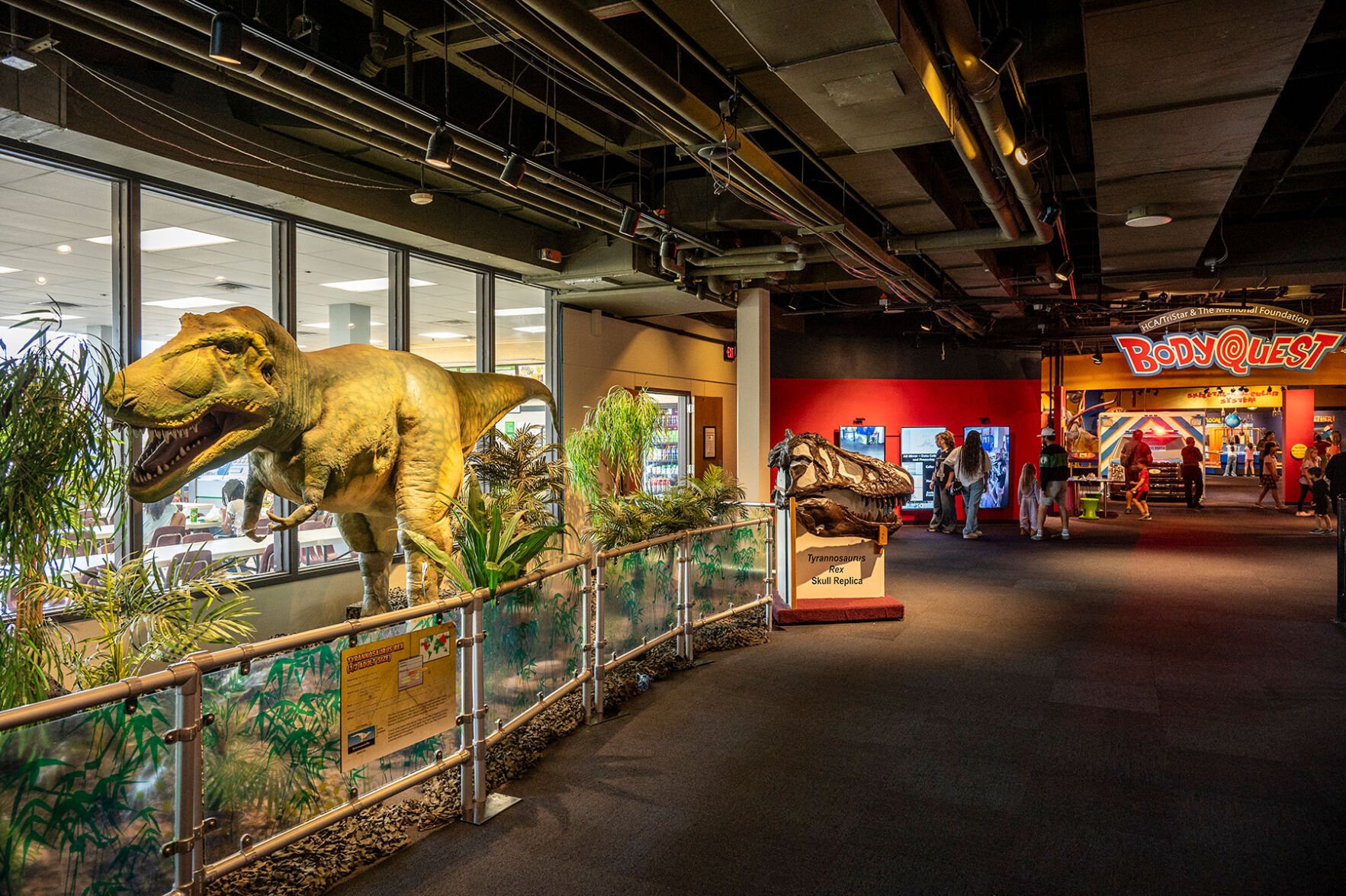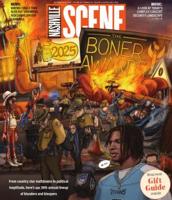Exhibits may come and go at Adventure Science Center, but memories of making a tornado in a 2-liter bottle or staring up at the planetarium sky are forever. This month, Adventure Science Center is celebrating eight decades of science education for kids.
“For 80 years, Adventure Science Center has been a place where curiosity and hands-on learning thrive,” says Leah Melber, the center’s president and CEO. “Generations of Nashvillians have grown up exploring our exhibitions, asking big questions and discovering the joy of science. As we celebrate, we’re also looking ahead to a new era, ensuring STEM education and pathways toward STEM careers remain accessible, inspiring and fun for everyone.” (The acronym STEM refers to science, technology, engineering and mathematics.)
From July 2024 through June 2025, Adventure Science Center welcomed more than 260,000 visitors from all 95 Tennessee counties, all 50 states and 21 countries. Those numbers include more than 26,000 students from 198 schools on field trips to the center.
Then called the Children’s Museum of Nashville, the center opened in 1945 in Lindsley Hall — a castle-like structure on Second Avenue South that now houses Metro offices. A star projector was installed in 1952 and became one the the main attractions in the museum. The organization was renamed Cumberland Museum and Science Center in 1972, and moved to its current Fort Negley Park location in 1974. In the early 1980s, the center opened its laser shows — which are still offered today — and its first computer lab.
A 16,000-square-foot expansion came in 1986, and the stately Adventure Tower climbing structure opened in 2002. In 2008, the new Sudekum Planetarium and the Space Chase exhibit gallery opened — with the center employing the first GOTO Chiron Hybrid projection system in the U.S.
Recent additions include an exhibit on pollinators on the center’s third floor and a new set of classrooms for visiting students to perform experiments. Also recently added is a space suit that belongs to Eiman Jahangir — an associate professor at Vanderbilt University and director of cardio oncology at Vanderbilt University Medical Center who was a finalist twice for NASA’s astronaut candidate program. Last year, Jahangir visited space via a Blue Origin craft.

Souvenirs from previous iterations of Adventure Science Center
Jahangir’s story is the kind that Adventure Science Center hopes to inspire. He was an Adventure Science Center kid, visiting with his family, and eventually leading summer camps there as an adult. Noah Gray, the center’s director of brand strategy, says he hopes seeing Jahangir’s example could spark something in a child’s brain — even if it’s just to go to summer camp at the center.
“We want to make sure that we’re expanding access to STEM education for everybody,” Gray says. “We want to make those career pathways the heroes of the story as obviously as possible.”
The center also recently added the Soundbox exhibit, which highlights Manuel Delgado, owner and luthier at Delgado Guitars. As it turns out, a great deal of physics goes into building guitars. ASC reps say that in time, every part of the center will have a Tennessee or local connection. Even the fossils at the newly added Fossil Frontier, which replaced the zero-gravity exhibit, were found in Tennessee.
The nonprofit plans to add an exhibition focusing on river preservation, and to revamp its 2005-opened Body Quest exhibit with updated health science curriculum.

Adventure Science Center
For its 80th birthday celebration on Oct. 31, Adventure Science Center will throw it back to the scientific innovations of 1945, including a demonstration on sodium polyacrylate, an absorbent material used in cat litter and diapers. Staff will also demonstrate the science behind the Slinky and help visitors make their own version of Silly Putty.
This year, the center continued its streak as Best Place to Take Kids When It’s Raining in the Scene’s annual Best of Nashville readers’ poll. But it’s not only for children. Adventure Science Center periodically hosts its 21-and-up Way Late Play Date events.
“There’s a ton of stuff to learn for adults here,” Gray says. “It doesn’t talk down, it doesn’t use childish language. There’s a lot that kids can enjoy and play with that’s tactile, but adults love it and learn while they’re here too. It’s also fun to watch a few hundred 21-plus people run around here like they’re kids.”
Correction: A previous version of this article noted that Adventure Science Center's planned river preservation exhibit will be presented in partnership with the Tennessee Valley Authority. The partnership will be with the Tennessee Department of Transportation. We apologize for the error.





